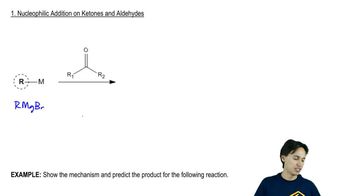Predict the reagents or reactant(s) necessary to complete the following syntheses.
(b)

 Verified step by step guidance
Verified step by step guidance Verified video answer for a similar problem:
Verified video answer for a similar problem:



 6:30m
6:30mMaster General properties of ozonolysis. with a bite sized video explanation from Johnny
Start learning